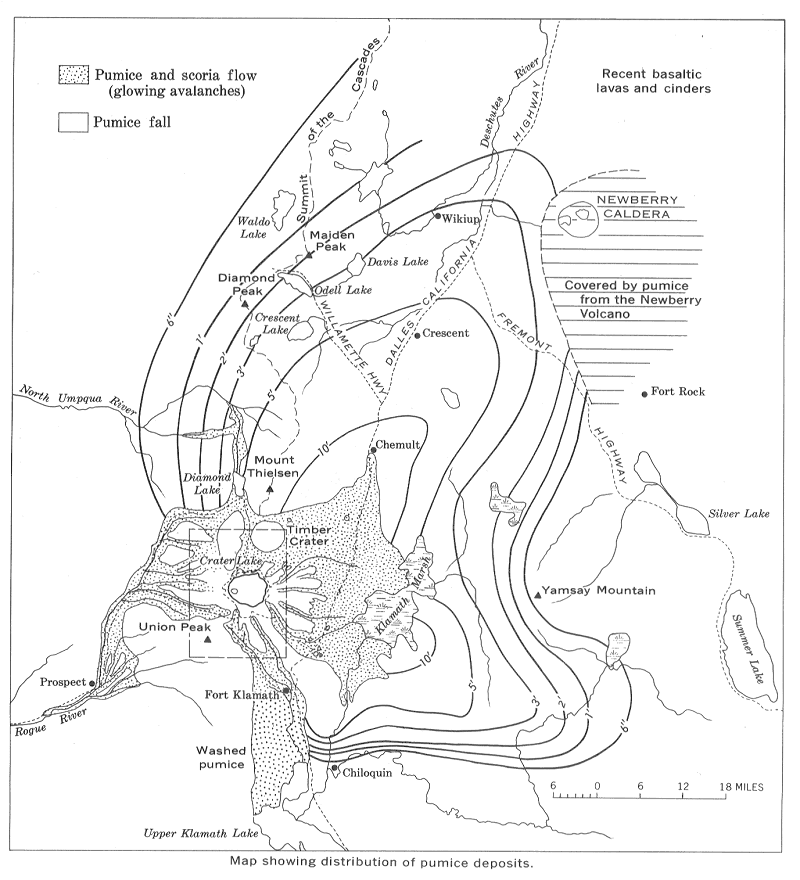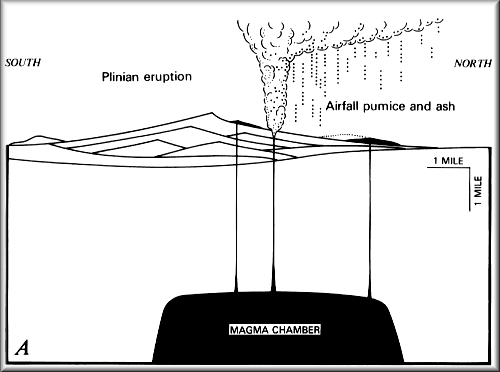 |
| Distribution of pumice deposits. Image acquired from the 1988 edition of the 1:62,500 scale topographic map entitled “Crater Lake National Park and Vicinity, Oregon.” |
The climactic eruption was fed by magma that had accumulated in a chamber about 5 km (3 mi) below the surface. As the enormous volume of magma (54-63 km3, or 13-15 mi3) was rapidly removed to feed the eruption, the roof of the magma chamber collapsed, forming the bowl-shape depression known as a caldera. The caldera has a diameter of approximately 8 km (5 mi) north to south and 10 km (6 mi) east to west, with an approximate depth of 1,200 m (4,000 ft) from the caldera rim to the lake floor. Pyroclastic flows deposited pumice and ash on all flanks of Mount Mazama and in valleys below.
The landscape after the eruption was a scene of devastation. Geologists have determined that the collapse was a relatively quick event during the eruption, occupying perhaps a few hours or days. All the valleys surrounding the volcano were partially filled with hot pyroclastic flows. The caldera was partly filled with pyroclastic materials and rock debris from its unstable walls. Subsequent to the climactic eruption, all volcanic activity has occurred within the caldera itself. Renewed volcanism built the postcaldera volcanoes of the central platform, Merriam Cone, and Wizard Island.
Following the climactic eruption, it took perhaps 250 years of rain and snow accumulation for the caldera to fill to its present-day lake level. The lake level is maintained by a balance between precipitation and evaporation plus seepage. By that time, the postcaldera volcanoes, nearly all of which are hidden beneath the surface of the lake, had finished their eruptions of andesite lava. Only a small rhyodacite dome was erupted later, about 5,000 years ago.
Studies show that hydrothermal activities are present at the lake floor. Chemical analysis of the lake water and hydrothermal studies indicate that warm water enters the lake from the lake bottom. The water is heated by hot rock beneath the fractured caldera floor. Scientists are not certain whether any magma still remains underground but it is likely that Mount Mazama will erupt again someday.


